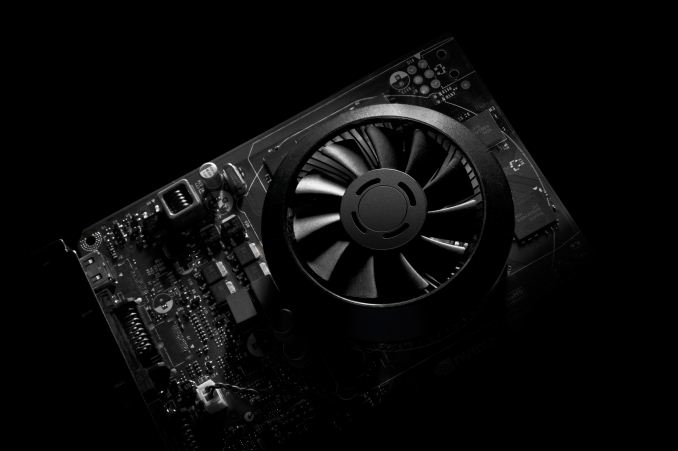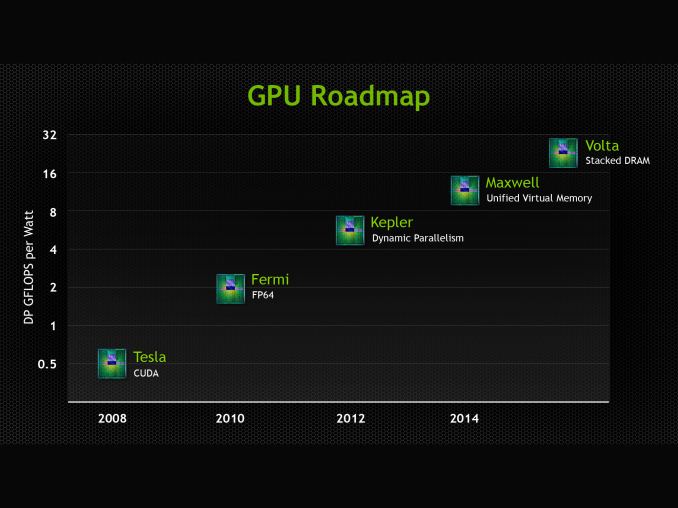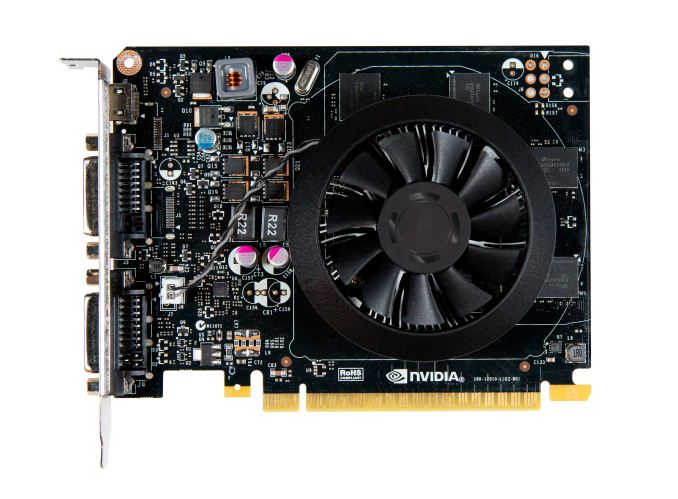The NVIDIA GeForce GTX 750 Ti and GTX 750 Review: Maxwell Makes Its Move
by Ryan Smith & Ganesh T S on February 18, 2014 9:00 AM EST
As the GPU company who’s arguably more transparent about their long-term product plans, NVIDIA still manages to surprise us time and time again. Case in point, we have known since 2012 that NVIDIA’s follow-up architecture to Kepler would be Maxwell, but it’s only more recently that we’ve begun to understand the complete significance of Maxwell to the company’s plans. Each and every generation of GPUs brings with it an important mix of improvements, new features, and enhanced performance; but fundamental shifts are fewer and far between. So when we found out Maxwell would be one of those fundamental shifts, it changed our perspective and expectations significantly.
What is that fundamental shift? As we found out back at NVIDIA’s CES 2014 press conference, Maxwell is the first NVIDIA GPU that started out as a “mobile first” design, marking a significant change in NVIDIA’s product design philosophy. The days of designing a flagship GPU and scaling down already came to an end with Kepler, when NVIDIA designed GK104 before GK110. But NVIDIA still designed a desktop GPU first, with mobile and SoC-class designs following. However beginning with Maxwell that entire philosophy has come to an end, and as NVIDIA has chosen to embrace power efficiency and mobile-friendly designs as the foundation of their GPU architectures, this has led to them going mobile first on Maxwell. With Maxwell NVIDIA has made the complete transition from top to bottom, and are now designing GPUs bottom-up instead of top-down.
Nevertheless, a mobile first design is not the same as a mobile first build strategy. NVIDIA has yet to ship a Kepler based SoC, let alone putting a Maxwell based SoC on their roadmaps. At least for the foreseeable future discrete GPUs are going to remain as the first products on any new architecture. So while the underlying architecture may be more mobile-friendly than what we’ve seen in the past, what hasn’t changed is that NVIDIA is still getting the ball rolling for a new architecture with relatively big and powerful GPUs.
This brings us to the present, and the world of desktop video cards. Just less than 2 years since the launch of the first Kepler part, the GK104 based GeForce GTX 680, NVIDIA is back and ready to launch their next generation of GPUs as based on the Maxwell architecture.
No two GPU launches are alike – Maxwell’s launch won’t be any more like Kepler’s than Kepler was Fermi’s – but the launch of Maxwell is going to be an even greater shift than usual. Maxwell’s mobile-first design aside, Maxwell also comes at a time of stagnation on the manufacturing side of the equation. Traditionally we’d see a new manufacturing node ready from TSMC to align with the new architecture, but just as with the situation faced by AMD in the launch of their GCN 1.1 based Hawaii GPUs, NVIDIA will be making do on the 28nm node for Maxwell’s launch. The lack of a new node means that NVIDIA would either have to wait until the next node is ready, or launch on the existing node, and in the case of Maxwell NVIDIA has opted for the latter.
As a consequence of staying on 28nm the optimal strategy for releasing GPUs has changed for NVIDIA. From a performance perspective the biggest improvements still come from the node shrink and the resulting increase in transistor density and reduced power consumption. But there is still room for maneuvering within the 28nm node and to improve power and density within a design without changing the node itself. Maxwell in turn is just such a design, further optimizing the efficiency of NVIDIA’s designs within the confines of the 28nm node.
With the Maxwell architecture in hand and its 28nm optimizations in place, the final piece of the puzzle is deciding where to launch first. Thanks to the embarrassingly parallel nature of graphics and 3D rendering, at every tier of GPU – from SoC to Tesla – GPUs are fundamentally power limited. Their performance is constrained by the amount of power needed to achieve a given level of performance, whether it’s limiting clockspeed ramp-ups or just building out a wider GPU with more transistors to flip. But this is especially true in the world of SoCs and mobile discrete GPUs, where battery capacity and space limitations put a very hard cap on power consumption.
As a result, not unlike the mobile first strategy NVIDIA used in designing the architecture, when it comes to building their first Maxwell GPU NVIDIA is starting from the bottom. The bulk of NVIDIA’s GPU shipments have been smaller, cheaper, and less power hungry chips like GK107, which for the last two years has formed the backbone of NVIDIA’s mobile offerings, NVIDIA’s cloud server offerings, and of course NVIDIA’s mainstream desktop offerings. So when it came time to roll out Maxwell and its highly optimized 28nm design, there was no better and more effective place for NVIDIA to start than with the successor to GK107: the Maxwell based GM107.
Over the coming months we’ll see GM107 in a number of different products. Its destiny in the mobile space is all but set in stone as the successor to the highly successful GK107, and NVIDIA’s GRID products practically beg for greater efficiency. But for today we’ll be starting on the desktop with the launch of NVIDIA’s latest desktop video cards: GeForce GTX 750 Ti and GeForce GTX 750.













177 Comments
View All Comments
EdgeOfDetroit - Tuesday, February 18, 2014 - link
The EVGAs have Displayport, but they might be the only ones. I ordered the Superclocked 750 Ti with the $5 rebate from Newegg because it had a DisplayPort and the competitors did not.Death666Angel - Tuesday, February 18, 2014 - link
"the 760 has been out for almost a year now and is an older process" -> Still the same 28nm process for the 760 and 750 alike. :)MrPoletski - Tuesday, February 18, 2014 - link
This jump in cache for 128k to 2mb... I wonder what that does for cryptocurrency mining?The Von Matrices - Tuesday, February 18, 2014 - link
Unless the integer shift operation has been improved, not much.g101 - Tuesday, February 18, 2014 - link
Nothing, nividia is fundamentally deficient with integer compute, these are architectural decisions that NVidia made in hopes of squeezing out slightly better FPS. Think: anti-gpgpu, or more of a classic asic.So no, this arc isn't going to change their position with regards to the actual algorithms. Perhaps there will be a moderate increase in sCrypt sha2 performance (due to the memory-hard nature of that implementation), however, nvidia's extreme (and sometimes intentional) incompetence with gpgpu leads me to believe that they still do not understand that GPGPU is the reason AMD's cards are above MSRP. It's not due to one specific hashing function, it's due to their superiority in over 11 specific functions, superior general opencl performance and comparatively greater performance for many SP compute intensive CUDA applications. For instance, cross-comparison between cuda and opencl raycasting yields some very interesting results, with the opencl/AMD solutions outperforming cuda 2:1, often with greater accuracy.
CUDA is easy, NVidia has zero compute advantage beyond 'ease'.
oleguy682 - Tuesday, February 18, 2014 - link
AMD receives nothing for their cards being sold over MSRP. Their channel partners likely have agreements in place for this generation of processors that is locked in at a specific price or price range. Perhaps if they signed new partners, or revised their processors substantially enough to warrant a new agreement, they can take advantage of the higher-than-MSRP situation, but I doubt it. And even the ASUS and Gigabytes of the world are likely unable to capitalize much on the demand. At best, they are able to sell boards to retailers as fast as they come off the line.Only the Neweggs are profiting handsomely off of this.
HighTech4US - Wednesday, February 19, 2014 - link
Von and g101 you are both wrong as Maxwell has now greatly improved integer compute. Check out the following review page from Tom's:http://www.tomshardware.com/reviews/geforce-gtx-75...
Quote: Historically, Nvidia's cards came up short against competing Radeons, which is why you see R9 290X boards selling for $700 and up. But the Maxwell architecture's improvements allow the 60 W GeForce GTX 750 Ti to outperform the 140 W GeForce GTX 660 and approach AMD's 150 W Radeon R7 265, which just launched, still isn't available yet, but is expected to sell for the same $150. On a scale of performance (in kH/s) per watt, that puts Nvidia way out ahead of AMD. Today, four GM107-based cards in a mining rig should be able to outperform a Radeon R9 290X for less money, using less power.
Yojimbo - Wednesday, February 19, 2014 - link
Which is good for NVidia, maybe just lucky. Increasing gamer market share in exchange for some short-term profits is probably a good trade-off for Nvidia. If AMD can't maintain their market share, they'll have less muscle behind their Mantle initiative.hpvd - Tuesday, February 18, 2014 - link
Does this first small Maxwell brings Support for Unified Virtual Memory Management IN HARDWARE? If yes: would be really interesting to see how efficient it could work...details see:
http://www.anandtech.com/show/7515/nvidia-announce...
willis936 - Tuesday, February 18, 2014 - link
I would like very much to see a comparison of GM107 in SLI to other $300 graphics card options. Us 560 Ti owners are in a tough position because it's upgradin' time and there's no decent, quiet solution. SLI is still a bit of a hack and from what I can tell can be more of a compatibility headache than a performance gain. These cards may be the exception though.